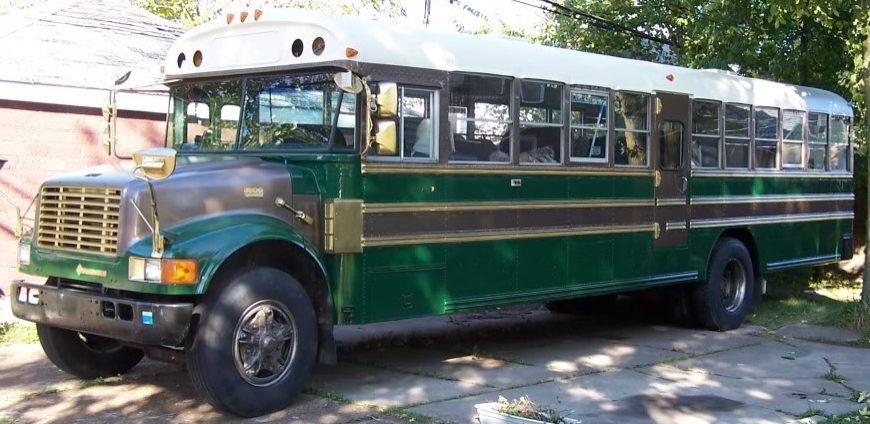So, finally the bus arrived on September 19th of 2008. The dealer we bought it from (Don Brown Bus Sales) not only delivered it for free, but also filled the tank before it left Herkimer to get to us. They also replaced the starter since it wouldn’t get the bus going to make the trip.
The trip for the driver and the chase car was uneventful until they got to Buffalo and ended up on the West Side, down by the Peace Bridge. Being that we were in the University Heights area, I had to talk them through the afternoon traffic and all the streets on the way over (which of course just built up my anticipation) until it arrived.
When you get a bus in New York State (at least) you have 14 days to make it not look like a School Bus. Removing the flashing lights is relatively easy, but the swing-out sign is a bit harder. Both leave holes in the steel ‘skin’ of the bus. The next thing is, of course, the paint.
Now, I could have just done a very quick, single color paint job. But I didn’t. We’d been talking about Steampunk stuff, and we had looked at lots of Pierce Arrows and Thomas Flyers (What, you don’t know about the Buffalo company that made the car that won the 1908 ‘Round The World’ race?), so we were going for something like this:
If you ever find yourself painting the rest of a bus, buy plenty of extra painter’s tape. There are LOTS of things to mask off. For instance, I went with painting the ‘rub rails’ brass, some between them and along the window rails a nice ‘Hammered Brown’, and the rest a nice ‘Hunter Green’.
Of course, that’s a lot of roller-time, and clean-up and fighting with the huge blue roof to keep the rain off. But the end result came out well.
And that set up the basic paint for the outside. I’d like to say that it still looks as good. The Rustoleum has held up pretty well overall, but now, five years later, it definitely needs some touching up. We’ll get to that in a later post when there’s warmer weather.














